Yeah I put it in ISRO thread earlier.
Latest Thread
- UK Is there any British officer or British military personnel here that I can discuss with?
- Article Requirements for the Command and Control of the UK's Ground-Based Air Defence
- NATO Missile Defense Radar(Türkiye)
- Ukraine Construction of a defense line by the Ukrainian army
- MBDA to double the range of Aster 15 surface-to-air missiles with Aster 15 EC upgrade
You are using an out of date browser. It may not display this or other websites correctly.
You should upgrade or use an alternative browser.
You should upgrade or use an alternative browser.
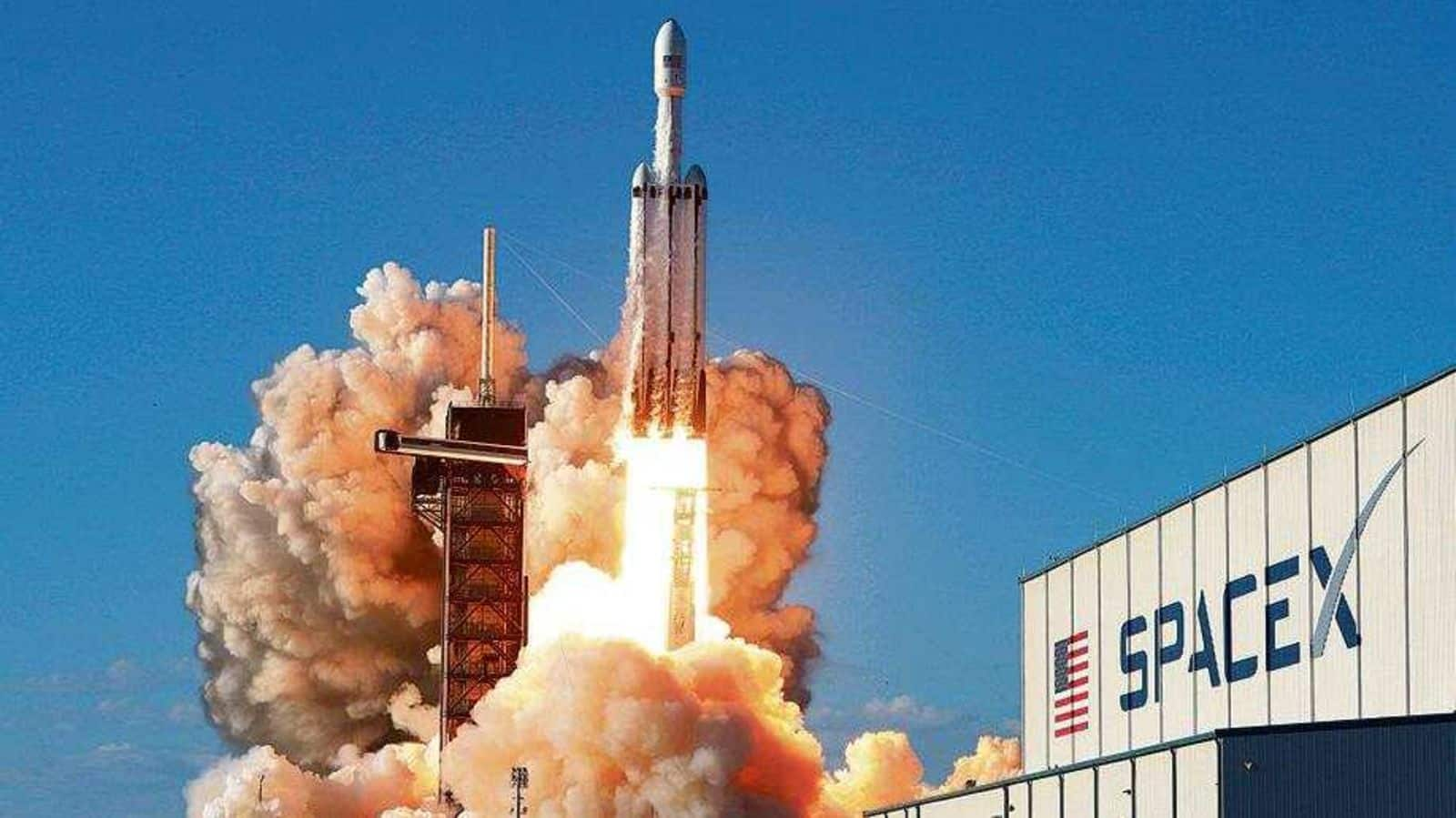
India’s quest for its own SpaceX hits a milestone
The successful test of Skyroot’s rocket engine augurs well for Indian startups building small-satellite launch vehicles.Skyroot’s test validated the use of new material and 3D-printed design to reduce the engine’s mass and time for development
- The successful test of Skyroot’s rocket engine augurs well for Indian startups building small-satellite launch vehicles
- Skyroot’s test validated the use of new material and 3D-printed design to reduce the engine’s mass and time for development
Larsen & Toubro (L&T) Aerospace Delivers the first launch hardware for the Indian Spaceflight Program- "Gaganyaan". This is the Middle segment of the world's third-largest solid propellant rocket booster S-200.
The rocket motor has been subjected to rigorous testing & has been delivered ahead of schedule.

The rocket motor has been subjected to rigorous testing & has been delivered ahead of schedule.
L&T has impressed me much,I wish they get involved in AMCA project tooLarsen & Toubro (L&T) Aerospace Delivers the first launch hardware for the Indian Spaceflight Program- "Gaganyaan". This is the Middle segment of the world's third-largest solid propellant rocket booster S-200.
The rocket motor has been subjected to rigorous testing & has been delivered ahead of schedule.
View attachment 6589

Gaganyaan mission: First crewless Gaganyaan flight only by end of 2021 | India News - Times of India
India News: The first crewless flight as part of the preparations for the ambitious Gaganyaan project originally planned for this year and then pushed to the firs
BENGALURU: The first crewless flight as part of the preparations for the ambitious Gaganyaan project originally planned for this year and then pushed to the first half of 2021 due to Covid-19, will now only happen at the end of next year. Isro will eventually also launch a second crewless flight, now scheduled for 2022 before launching humans into space.
(More at link)
India’s Shukrayaan orbiter to study Venus for over four years, launches in 2024
by Jatan Mehta — November 19, 2020
A not-to-scale representation of ISRO’s Venus orbiter mission Shukrayaan. Credit: ISRO.
Shukrayaan will be the first mission to map Venus’ subsurface
MUMBAI, India — India’s space agency aims to launch its Venus orbiter Shukrayaan in late 2024, more than a year later than previously planned, an ISRO research scientist told a NASA-chartered planetary science planning committee Nov. 10.
T. Maria Antonita of the Indian Space Research Organisation (ISRO) detailed the status of the mission to scientists drafting a new 10-year plan for NASA’s planetary science program. Shukrayaan will be India’s first mission to Venus and will study the planet for more than four years.
ISRO was aiming for a mid-2023 launch when it released its call for instruments in 2018, but Antonita told members of the National Academies’ decadal survey planning committee last week that pandemic-related delays have pushed Shukrayaan’s target launch date to December 2024 with a mid-2026 backup date (optimal launch windows for reaching Venus occur roughly 19 months apart).
Antonita said Shukrayaan is currently slated to launch on India’s GSLV Mk II rocket. However, she said the team is also evaluating the possible use of the more powerful GSLV Mk III rocket, which would allow Shukrayaan to carry more instruments or fuel. A launch vehicle decision, she said, is expected by the time ISRO freezes the mission’s configuration and final set of instruments in the next three to six months.
In its current configuration, the orbiter weighs about 2,500 kilograms and will carry a science payload consisting of a synthetic aperture radar and other instruments.
Once launched, Shukrayaan is expected to take a few months to reach Venus, where it will enter a highly elliptical orbit of 500 by 60,000 kilometers around the planet. Over the following year, it will use aerobraking to lower its orbit to 200 by 600 kilometers. This polar orbit will be the final one used for scientific observations.
The mission’s primary science objectives are to map Venus’ surface and subsurface while studying the planet’s atmospheric chemistry and interaction with the solar wind.
Shukrayaan’s flagship instrument is an improved version of the dual frequency synthetic aperture radar (SAR) India’s Space Applications Centre built for the Chandrayaan-2 spacecraft currently orbiting the Moon. Antonita said Shukrayaaan’s SAR payload will have up to four times the resolution of NASA’s Magellan orbiter, a Venus mapper launched in 1989. Notably, Shukrayaan will also carry a ground penetrating radar, making it the first to map Venus’ subsurface. These observations would help scientists better understand Venus’ geology and evolution.
Roughly 100 kilograms of Shukrayaan’s 2.5-ton mass is set aside for scientific instruments, according to the call for instrument proposals ISRO issued two years ago soliciting payloads from India and abroad. The open call for instruments marks a return to the approach ISRO took with Chandrayaan-1, the lunar orbiter it launched in 2008 carrying six instruments from countries other than India. The 2013 Mangalyaan Mars orbiter and 2019’s Chandrayaan-2 lunar orbiter and lander, in contrast, carry only Indian instruments.
Of the proposals, 20 candidate instruments have been shortlisted but the session didn’t mention which ones. Antonita did say that Russia, France, Sweden and Germany will have instruments onboard. The French space agency CNES announced in September that the Venus Infrared Atmospheric Gases Linker, or VIRAL, instrument it codeveloped with Russia’s space agency will fly on Shukrayaan.
In addition to its flagship radar, Shukrayaan will also carry an instrument suite capable of spectroscopic observations in infrared, ultraviolet and submillimeter wavelengths to study Venus’ atmosphere, according to Antonita’s slides. The possible detection of phosphine in Venus’ upper atmosphere excited many people about the prospects of life there, although some scientists are still skeptical. According to Antonita, the presence of phosphine and other biomarkers in Venus’ upper atmosphere could be confirmed using the orbiter’s Near Infrared Spectrometer. The instrument will also be used to detect and locate any active volcanism on Venus
Only three spacecraft have orbited Venus in the past 30 years, but space agencies around the world are showing renewed interest in the second planet from the sun. NASA selected two Venus missions earlier this year for further consideration for launch opportunities in 2025 and 2028. The European Space Agency is considering a Venus orbiter mission called EnVision that would launch by the 2030s. And Russia is working on a Venus orbiter and lander mission concept called Venera-D that would launch no earlier than 2023.

India’s Shukrayaan orbiter to study Venus for over four years, launches in 2024
India’s Shukrayaan orbiter to study Venus for over four years, launches in 2024
 spacenews.com
spacenews.com

India’s Independent Navigation Satellite System ‘IRNSS’ Now Part of World Wide Radio Navigation System – Indian Defence Research Wing | PG-Intel
PG-Intel is an IT and Business Security News Website which covering the latest news, research, cyberthreats, business updates and geopolitics.
The Centre on Friday stated that Indian Regional Navigation Satellite tv for pc System (IRNSS) has been accepted as a part of the World Extensive Radio Navigation System (WWRNS) for operation within the Indian Ocean area by the Worldwide Maritime Organisation (IMO). The transfer will allow service provider vessels to make use of IRNSS for acquiring place info just like World Positioning System (GPS) and World Navigation Satellite tv for pc System (GLONASS) to help within the navigation of ships in ocean waters throughout the space coated by 50N latitude, 55E longitude, 5S latitude and 110E longitude (roughly as much as 1500 km from Indian boundary).
The Maritime Security Committee (MSC) of Worldwide Maritime Organisation (IMO) throughout its latest assembly held from November 4-11 has accepted the popularity of the IRNSS as a part of the World-Extensive Radio Navigation System, Ministry of Ports, Delivery and Waterways stated in a press release. This can be a important achievement of Ministry of Ports, Delivery and Waterways (MoPSW), Directorate Basic of Delivery (DGS) and Indian House Analysis Organisation (ISRO) in direction of ‘Atmanirbhar Bharat’.
IRNSS is an impartial regional navigation satellite tv for pc system developed by India. It’s designed to supply correct place info service to help within the navigation of ships in Indian Ocean waters. A round has been issued by IMO on November 11, 2020 for info of the opposite member states of the organisation.
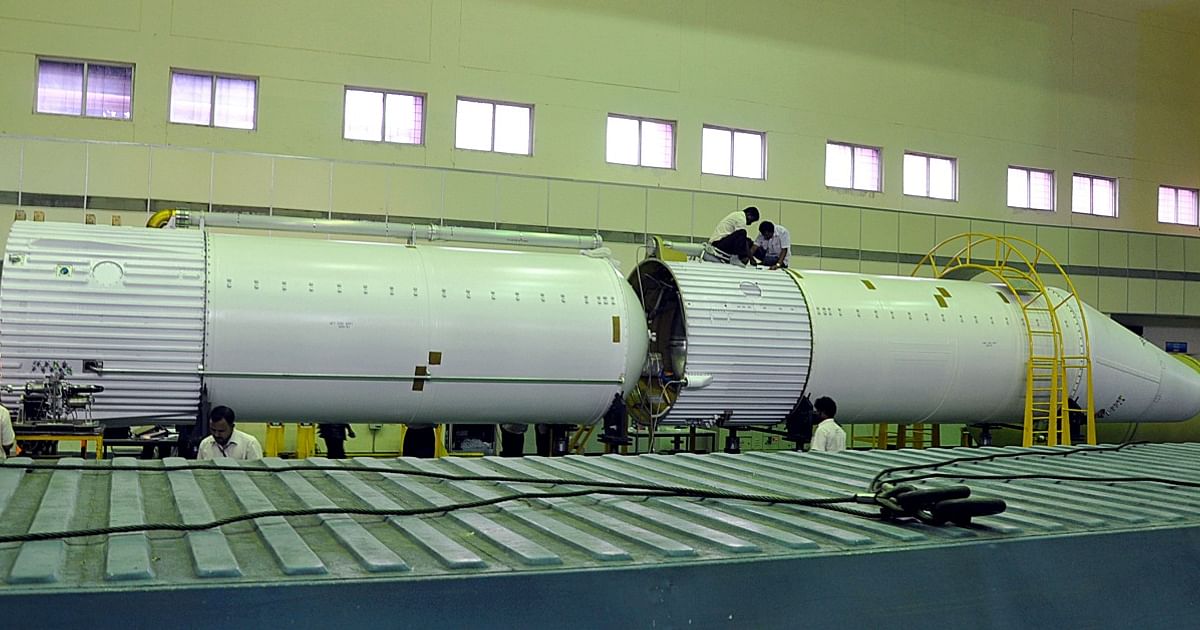
HAL delivers biggest ever cryogenic propellant tank to ISRO
Hindustan Aeronautics Limited has delivered the biggest cryogenic propellant tank ever fabricated by the company to the Indian Space Research Organisation ahead of its contractual schedule.
(More at link)
Defence PSU Hindustan Aeronautics Limited (HAL) handed over the 50th L-40 stage of Geosynchronous Launch Vehicle (GSLV-MKII) to ISRO, in Bengaluru. Credit: PTI Photo
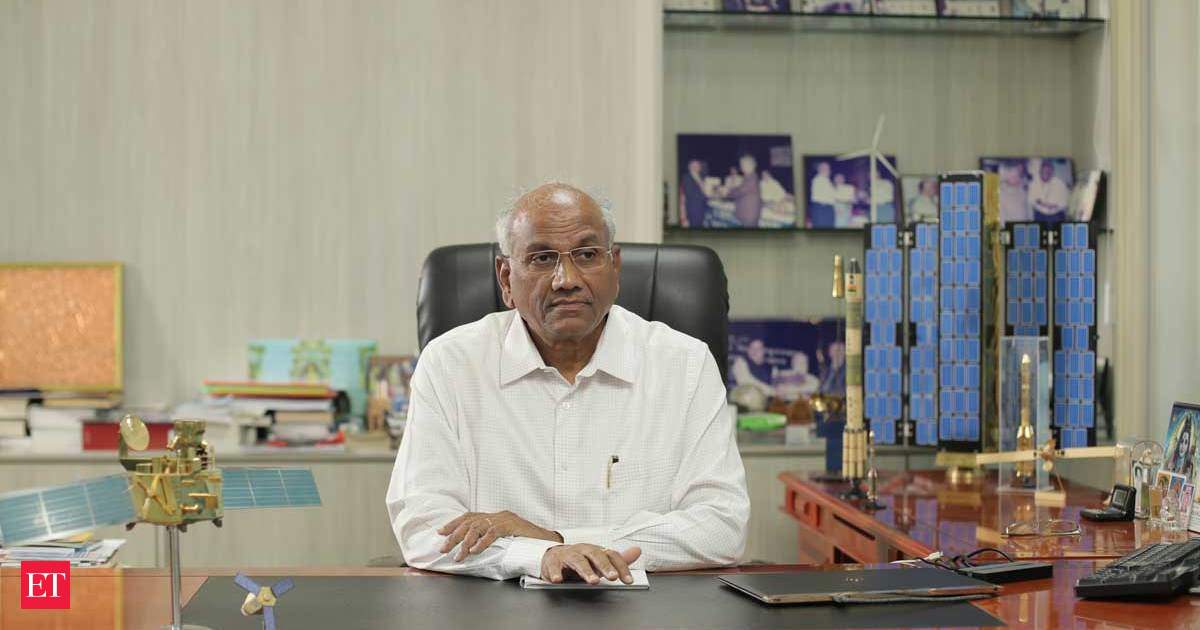
Ananth Technologies signs JV to build, launch satellites from India
Ananth is the first Indian company to tap the global market after India opened up its space sector, allowing private firms to build satellites and rockets and offer space services from the country.
BENGALURU: Aerospace firm Ananth Technologies will set up a joint venture with US satellite operator Saturn Satellites to build two communication satellites initially and launch them using the Indian space agency’s workhorse PSLV rocket.
Ananth is the first Indian company to tap the global market after India opened up its space sector, allowing private firms to build satellites and rockets and offer space services from the country.
(More at link)
Indian startup Pixxel to now launch from India, not Russia as first planned
Chethan Kumar | TNN | Dec 4, 2020, 15:31 IST
BENGALURU: Pixxel, an Indian startup which is looking to launch a constellation of satellites to make available satellite imagery for a variety of applications will be launching its first satellite on an Indian launch vehicle, and a contract for the same has been signed late on Thursday.
Pixxel had earlier tied up with Russia for its launch at the end of this year, but has now decided to launch on a PSLV rocket from Isro’s spaceport in Sriharikota. Sources in Isro said that the launch is mostly going to be scheduled in February. “The modalities are being worked out,” one of them said.
Isro chairman K Sivan told TOI: “This is the second of the two agreements we’ve signed with startups after the nod to create IN-SPACe was granted by the Centre. While the agreement with Agnikul Cosmos is for helping them build a launch vehicle, the contract with Pixxel is to launch their first satellite. You will see more such initiatives in the next few months.”
Sivan did not comment on when the Pixxel launch is likely to happen. The TOI first reported the non-disclosure agreement with Agnikul, which is building Agnibaan, a launch vehicle capable of taking upto 100kg to orbits around 700km high, access both low and high inclination orbits, and is completely mobile — designed for accessing more than 10 launchports.
Founded by Ahmed and Kshitij Khandelwal, both only 22 years of age now, Pixxel is a firm registered in Bengaluru. In August, it raised $5m, which it plans to use to put in space 24 small satellites. Ahmed had told TOI earlier that opportunities are aplenty and that start-ups have it in them to make the best of what’s ahead.
The Centre earlier this year approved the creation of IN-SPACe, India’s new authorization and regulatory body under the Department of Science, and both Isro and the private industry believe that this will usher in a new era of space technologies.
As reported by TOI last month, the government has since approved the manpower for IN-SPACe and the DoS has also recommended three names for its chairmanship, which have been sent to the PMO

 www.google.com
www.google.com
Chethan Kumar | TNN | Dec 4, 2020, 15:31 IST
BENGALURU: Pixxel, an Indian startup which is looking to launch a constellation of satellites to make available satellite imagery for a variety of applications will be launching its first satellite on an Indian launch vehicle, and a contract for the same has been signed late on Thursday.
Pixxel had earlier tied up with Russia for its launch at the end of this year, but has now decided to launch on a PSLV rocket from Isro’s spaceport in Sriharikota. Sources in Isro said that the launch is mostly going to be scheduled in February. “The modalities are being worked out,” one of them said.
Isro chairman K Sivan told TOI: “This is the second of the two agreements we’ve signed with startups after the nod to create IN-SPACe was granted by the Centre. While the agreement with Agnikul Cosmos is for helping them build a launch vehicle, the contract with Pixxel is to launch their first satellite. You will see more such initiatives in the next few months.”
Sivan did not comment on when the Pixxel launch is likely to happen. The TOI first reported the non-disclosure agreement with Agnikul, which is building Agnibaan, a launch vehicle capable of taking upto 100kg to orbits around 700km high, access both low and high inclination orbits, and is completely mobile — designed for accessing more than 10 launchports.
Founded by Ahmed and Kshitij Khandelwal, both only 22 years of age now, Pixxel is a firm registered in Bengaluru. In August, it raised $5m, which it plans to use to put in space 24 small satellites. Ahmed had told TOI earlier that opportunities are aplenty and that start-ups have it in them to make the best of what’s ahead.
The Centre earlier this year approved the creation of IN-SPACe, India’s new authorization and regulatory body under the Department of Science, and both Isro and the private industry believe that this will usher in a new era of space technologies.
As reported by TOI last month, the government has since approved the manpower for IN-SPACe and the DoS has also recommended three names for its chairmanship, which have been sent to the PMO

Indian startup Pixxel to now launch from India, not Russia as first planned | India News - Times of India
India News: BENGALURU: Pixxel, an Indian startup which is looking to launch a constellation of satellites to make available satellite imagery for a variety of app.
Well that sucks, but kind of expected given all the productive time lost this year.
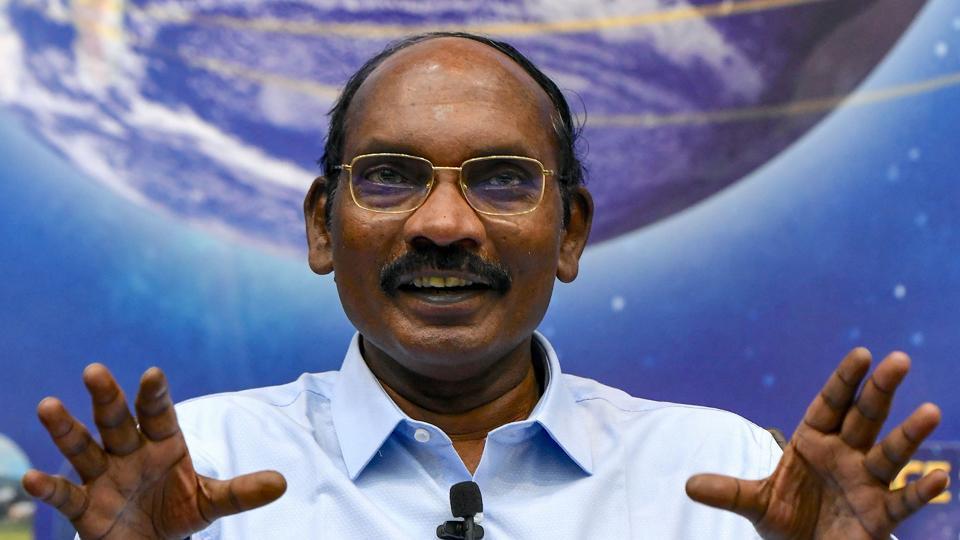
 www.hindustantimes.com
www.hindustantimes.com

India’s human space flight mission ‘Gaganyaan’ to be delayed by a year due to Covid-19
The pandemic has also delayed other big-ticket missions that ISRO had planned for the year, including India’s first solar mission – Aditya L1 – scheduled for mid-2020
I think ISRO is being too cautious,want to make this mission smooth.Well that sucks, but kind of expected given all the productive time lost this year.

India’s human space flight mission ‘Gaganyaan’ to be delayed by a year due to Covid-19
The pandemic has also delayed other big-ticket missions that ISRO had planned for the year, including India’s first solar mission – Aditya L1 – scheduled for mid-2020www.hindustantimes.com
Dec 17th launch coming up seems to be on schedule...
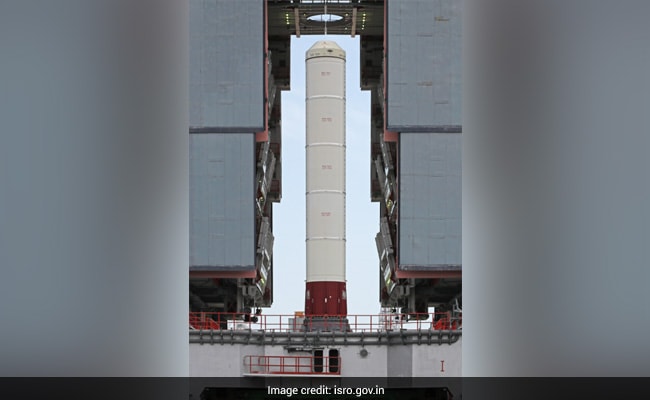
 www.ndtv.com
www.ndtv.com

ISRO To Launch India's 42nd Communication Satellite On December 17
The launch of communication satellite CMS-01 onboard the Polar Satellite Launch Vehicle (PSLV-C50), is scheduled on December 17 from the Satish Dhawan Space Centre at Sriharikota, the Indian Space Research Organisation said today.
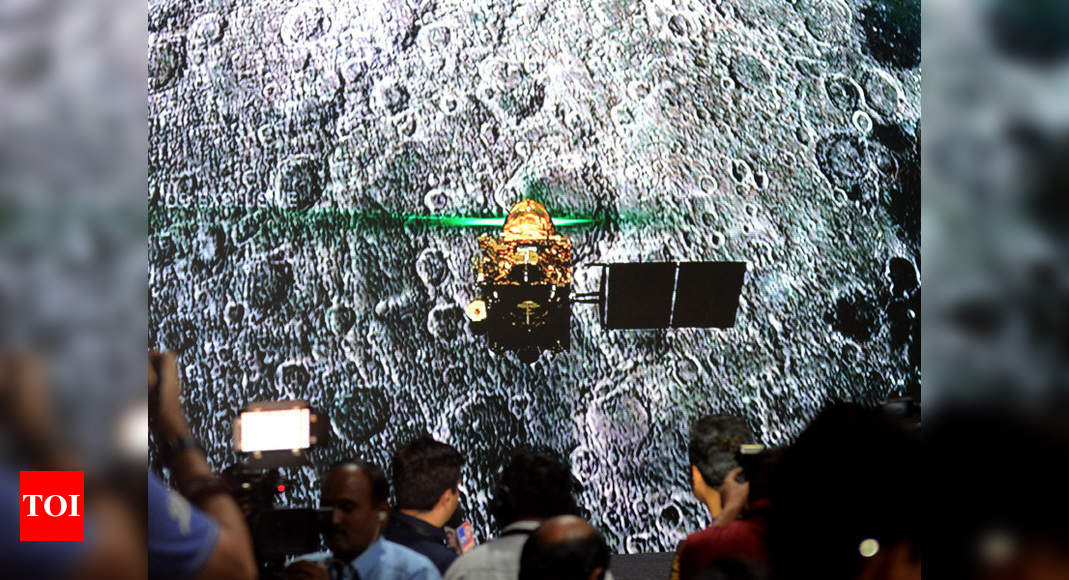
Chandrayaan-2 mission’s initial data released | India News - Times of India
India News: The Indian Space Research Organisation (Isro) Thursday released to the public the initial data from Chandrayaan-2, India’s second Moon mission, which
BENGALURU: The Indian Space Research Organisation (Isro) on Thursday released to public the initial data from Chandrayaan-2, India’s second Moon mission, which was launched on July 22, 2019.
The Orbiter, which was injected into a lunar orbit on September 2, 2019, carries eight experiments/payloads, all of which have been performing well and sending data received.
Isro said that the data received suggests excellent capability to deliver on the pre-launch promises.
“The public release data archived at the Indian Space Science Data Center (ISSDC) in Byalalu, near Bengaluru is prepared in the standard, globally followed planetary data system-4 (PDS4) format for public release.
Isro Science Data Archive (ISDA) currently holds data sets acquired by Chandrayaan-2 from September 2019 to Februaru 2020 from seven instruments. Data sets from IIRS payload will be added to this shortly,” Isro said.
The set released on Thursday is basic data — what Isro calls Level-0 and Level-1 datasets — prepared using PDS4 standards. The ISSDC is the nodal center of planetary data archive for planetary missions of Isro.
“Chandrayaan-2 data, as with all others, required to be peer-reviewed scientifically and technically before acceptance as PDS archives and declared ready for sharing with the global scientific community and general public. This activity has been completed and hence the first set of data from the mission has now been released for wider public use,” Isro added.
In the period since launch, payload teams tuned onboard systems for optimal instrument configurations, derived essential in-flight calibration data, revised or updated data processing steps and software.


